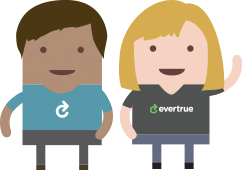
The Giving Funnel
"The giving pyramid has been a really important way to establish our targets for capital campaigns and organizing our work. With the growth of digital engagement online and offline and the ability to marry that data to traditional donor profiles, it's presented more of an opportunity to create an integrated funnel."
e-book:
Flip the Pyramid
The Ultimate Guide to the Giving Funnel Approach
Download the e-bookworksheet:
A step-by-step Guide to implementing Giving Funnel in your shop today.
Download the checklistWhat's the Giving Funnel?
The Giving Funnel is an approach to advancement based on the for-profit world’s sales funnel. It gives organizations a framework for how to engage people and qualify leads, assign those prospects for personalized outreach, and ultimately solicit a gift. This funnel model is the future of fundraising.
Advancement has always used a traditional giving pyramid-driven approach to plan, monitor, and provide structure to fundraising campaigns, but times are changing.
We’re here to tell you why you should focus on your Giving Funnel
instead of the pyramid, how to take these steps in your institution,
and what you’ll need to be successful.
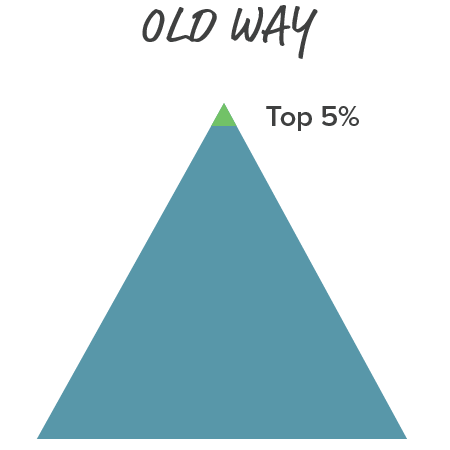
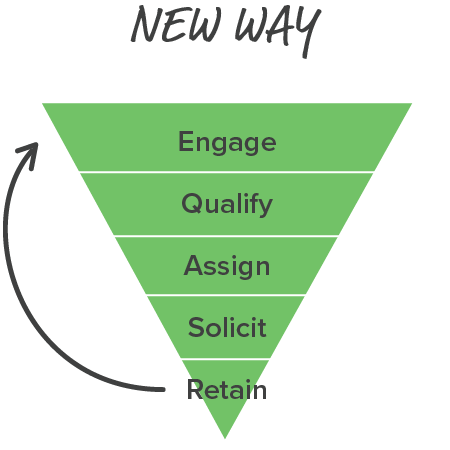


Explore the Giving Funnel
Introduction
The Giving Pyramid: A Trusted Friend
Since the dawn of capital projects, the Giving Pyramid has served an important role in the life of the campaign: to support donor readiness analyses, provide a strategic fundraising framework to principal and leadership giving teams, and to serve as a roadmap and gut check for fundraising at the highest level. Also, an announcement that a donor checked off a top box on the pyramid thanks to their $5 million gift can be a great motivator and morale boost for the broader fundraising operation.
The traditional Giving Pyramid is useful for planning, monitoring, and providing structure to fundraising and capital campaigns. But are we overly reliant on the Giving Pyramid to demonstrate the success (or failure) of our campaigns? We know that in a traditional fundraising organization, 5% of donors supply 90% of the gifts. I am writing today to predict that, like my pal Dylan says, “Times, they are a-changin’.”
Times have been changin’ in higher ed development for decades. Donor participation rates are declining. They’re down 50% in the last 30 years1 and 30% in the last 15 years2, while overall philanthropic giving decreased in 2018 for the first time in five3. The subscription economy (the focus on relationships above transactions) has altered the fundraising world.
Donors expect to be treated as individuals rather than targets of mass marketing, and they expect ongoing value from their investments. And the next wave of donors has a completely different set of giving behaviors; they expect to be engaged in ways that provide them with continued, ongoing value. We keep hearing about these themes in conference presentations, webinars, and blog posts — but are we really ingesting these truths and taking action on them in our daily work?
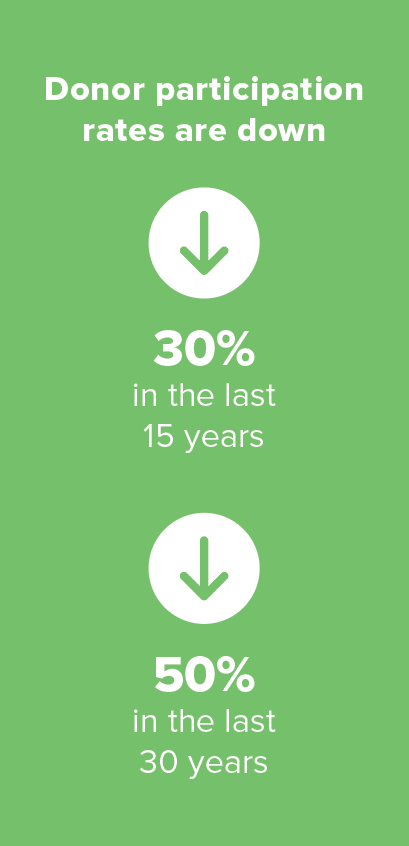

The For-Profit Engagement Model
If you talk to any CEO or sales executive in the for-profit world, they can concisely rattle off the stages of their sales and marketing funnel. This model gives organizations a framework for how to tell the authentic story of a product, engage an audience around a brand, qualify which people are most likely to become customers, assign customized and targeted marketing and sales outreach to these targets, and then “close” the customer through the purchase of a product or service. Visually, this looks like a funnel.
CEOs and sales executives in the for-profit world have one bottom line: to increase revenue. And, as we all know, the competition for customers (and donors!) is fierce. The Sales Funnel provides a digestible, prescriptive approach to converting a large target-audience base into loyal customers. With demanding metrics and revenue goals, for-profit companies use the Sales Funnel to give structure to their daily work and to accurately forecast for the months ahead.
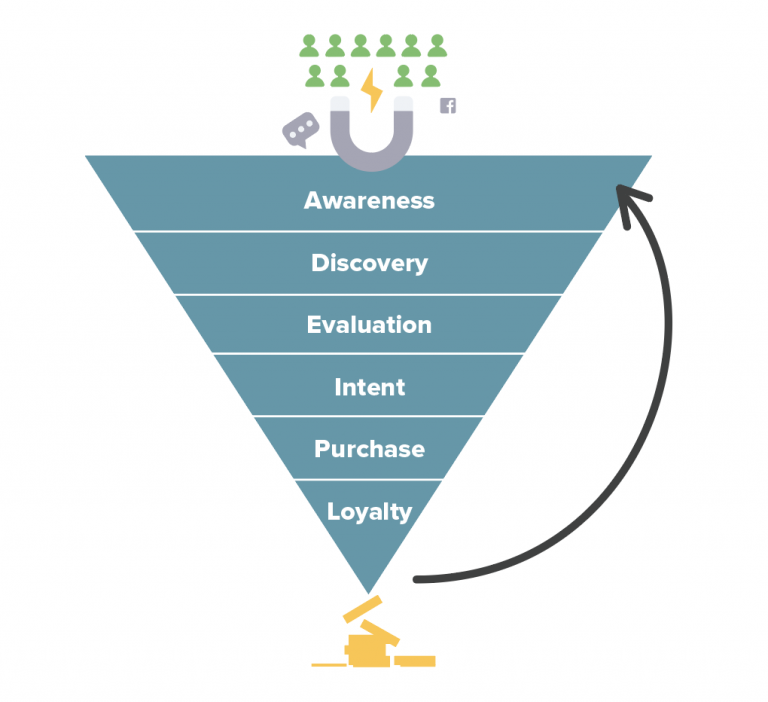

Will Advancement Keep Up?
I was a student of the nonprofit, educational fundraising world for many years. In the early days of my exposure to the field, I was amazed to learn that colleges and universities across the country were raising billions of dollars in spite of antiquated processes, outdated technology, and a lack of focus on the bottom 95% of the Giving Pyramid. These shortcomings might sink a company in the for-profit world. I quickly learned that higher ed fundraising has afforded these limitations because educational institutions have something that most for-profit companies don’t: a natural constituency of “customers” who are personally connected to and invested in the organization.
An education becomes part of you. This is the key to those billions of dollars that flow into higher ed institutions.
However, this anomaly cannot hold up forever. Educational institutions hold the attention, hearts, and mindshare of their audiences…and yet they are still losing donors. Fond memories can only go so far, and nostalgia is a crutch. The top 5% of donors are in danger of donor fatigue and they are aging. In short, higher education fundraising is facing a “let go or be dragged” situation.
I hope to convince you that the “let go” option is to leave outdated business practices in the past, and dive head-first into the bottom 95% of the traditional Giving Pyramid.
Embrace the constituents who say they love you on social media. Meet the next wave of donors where they are at today (online). Provide them with authentic value that complements the lives they lead. Leave spreadsheets behind and instead capitalize on the abundance of technology tools that make it easy to monitor, analyze, and act on digital engagement and donor interests.






1CASE Currents, “Class exodus: The alumni giving rate has dropped 50 percent over the last 20 years. How can you rethink your value to graduates?” by Dan Allenby, October 2014
22016 CAE VSE survey
3Giving USA 2019 Report
Engage
There’s a whole big world out there full of brands calling for our attention. How do we decide which ones win our loyalty, and why? Why do we fly with a certain airline, favor a brand of running shoes, fork over a big premium for a particular pair of jeans, or shop at a certain grocery store?
For-profit companies live and die by their brands. Companies like JetBlue, Target, Netflix, and Patagonia have loyal customer bases for two main reasons: 1) They have developed a unique brand that accurately targets a carefully defined and time-tested niche audience; and 2) their customers feel that they receive something of value from their relationship with that company. For-profit companies have the great challenge of cultivating a loyal consumer base in the midst of constant competition, so they absolutely must produce targeted, on-brand content, and they must give their consumers something of value.
Here lies an interesting distinction between the for-profit and educational worlds. Educational institutions have something that most for-profit companies do not: a natural, home-grown constituency of people that spent years absorbing, engaging with, embodying, and living your brand. After investing years of life (and a substantial sum of money), your alumni and your brand are one and the same. From the for-profit perspective, you have been given the highly coveted gift of a natural market, and this market is just waiting to be meaningfully engaged.
Your alumni are asking to be engaged in more than the traditional sense of being invited to attend an alumni happy hour or serve as an alumni mentor (though these are important engagement points that we shouldn’t immediately cast aside). I encourage you to think critically about the brainpower and working hours that are put into what we currently call “alumni engagement.” Are your alumni relations and communications teams aligning their current engagement methods and messages with the school’s highest needs? Are your events bringing real value to a substantial population of alumni? Is your carefully-curated school content touching the right audience and inciting engagement, or is it being tossed in the recycling bin?
“Don’t bring smart people together and not ask them to do anything useful.” These are words of wisdom from a friend of mine who sits on a number of boards. And, this applies here. We need to move toward providing our alumni with more meaningful engagement beyond sending out a quarterly newsletter or alumni magazine. Don’t passively produce content and not measure whether it is worth your institution’s time, effort, and monetary investment.
Instead produce stories that highlight problems your institution is working to solve, and video content that highlights the impact of student groups on campus. Interview beloved professors. Film snippets of inspiring lectures. Poll your alumni amidst challenging times on campus. Educate your alumni on the current priorities of your school. Inform alumni about where you need their help. Tap into their affinity, their discontent, their admiration, their connection. Create thought-provoking, meaningful content and share it across Facebook, LinkedIn, Twitter, Instagram, and your website. Encourage gift officers to share these stories with their prospects.
And then (and this is a very important piece), celebrate the reactions. Many schools are creating incredible content, capturing the attention of previously disengaged, high-net-worth alumni hundreds of times over, but then: nothing happens.
In the for-profit world, if a potential customer wore a company-branded T-shirt, showed up to company events, liked and commented on a company’s Facebook page, and made efforts to stay connected with other customers, they would be given the best that the company had to offer. Let your engaged alumni know that you care about them by improving their lives with the value that your institution can offer.
How to do it
- Keep communication and fundraising teams in lockstep on priorities
- Meet regularly to brainstorm, strategize and and review upcoming content
- Fine-tune digital distribution strategies to maximize the reach of your work
- Dedicate team members to tracking exactly who is engaging
What you need
- Team members dedicated to monitoring digital engagement
- Easy access to donor wealth and net worth information
- Automated processes to identify digitally engaged donors
- Process for surfacing digitally-engaged prospects to prospect research team
Qualify
Once you are producing quality content, sharing it across multiple channels, and capturing the hearts, eyes, and ears of your school’s alumni, you must closely monitor the results. And when you do, you will find that there are thousands of alumni, parents, and friends of your institution who are engaging with your school’s social media pages, but have not received any 1:1 outreach from your team.
This can be overwhelming. Among the thousands of alumni that raise their virtual hands by reacting to your high-quality, engaging content, who should receive immediate follow-up from an annual fund or major gift officer? And let’s not forget the golden nuggets of insights that are collected from alumni at events, committee meetings, mentoring gatherings, and student recruitment events. Who is tasked with immediate follow-up to deepen the attachment and keep the positive momentum going?
In the for-profit world, there are entire teams of people who are dedicated to monitoring consumer engagement of all kinds and qualifying leads. Companies task important players on the marketing and business development teams to unearth future customers. They track clicks on ads, email open rates, website visits, unfulfilled shopping carts, and then they analyze those engagement points and qualify who to target as prospective customers. And when a team member has a substantive interaction with a prospect at a conference or networking event, these teams are specifically tasked with nearly-immediate follow-up.
Consistency is key in building a strong relationship. It’s not about grand shows of affection every few months. It’s about building a solid, accountable, present foundation, and keeping consistent momentum to move forward.
And fundraising is about building relationships, so these same principles of consistency apply. Don’t let the passing of time be a detriment to the strong relationships you’re building with donors. Be timely, and be consistent.
This call to action goes out to my higher ed colleagues who work in prospect development: You play such an important role in the traditional Giving Pyramid framework, and there is even greater potential for you to contribute in the flipped-pyramid world. There is a wealth of digital engagement data readily available, and I urge you to take advantage of these “warm leads” (as we would so lovingly call them in the for-profit world).
The University of Oregon prospect management team provides us with an example of what’s possible. The team sits down for 30 minutes every two weeks to do “prospecting blitzes” using EverTrue to surface and analyze digitally engaged prospects. These half-hour blitzes produce 50-100 new prospects for routing to leadership annual fund or major gift portfolios. Saved searches in EverTrue and automated prospect discovery pools leverage technology to speed up this process and put the right potential donors in front of fundraisers automatically. This is qualification that would make the for-profit world jealous.
How to do it
- Regularly review digitally engaged prospects
- Combine digital engagement with past giving, career info, interests, wealth insights and more
- Meet regularly to strategize the ROI of your content
What you need
- Strategies to combine giving, careers, interests, wealth, and digital engagement to build prospect lists
- Easy access to wealth data and net worth information
- Process for identifying and researching new digitally engaged donors
Assign
Keep the Donor Giving Funnel flowing by identifying highly engaged alumni and sending leads into gift officer portfolios or for targeted annual fund outreach. How can prospect researchers and managers more effectively mine digitally engaged prospects and partner seamlessly with frontline fundraisers to take action on
this engagement?
Consumers are endlessly pulled in different directions. Businesses know that timing and rapid responses are critical to capitalize on consumer engagement. Sales executives for commercial companies know that holding the attention of a prospect once they have indicated interest is a delicate dance that needs to happen quickly. Imagine calling a Tesla showroom and leaving a voicemail that you’re a huge Tesla fan, feel a lot of loyalty to the brand, and are considering purchasing a new vehicle. If there was a one-month lag time between making that phone call and receiving a return call from the showroom, Tesla would be a thing of the past!
We need to replicate this timeliness in advancement shops so we can capture engagement and respond quickly. This is how you stay relevant and top-of-mind with your alumni.
Imagine that your school shares heartfelt footage of a Commencement Weekend ceremony held for first-generation graduates and their families. An alumna comments, “As a first- generation immigrant and class of 1980 grad, this makes me smile. My dad was a janitor at the college and seeing me graduate and walk across that stage was such a proud moment for him and my whole family!” This alumna is a former advertising mogul who now runs her own PR firm, and she gave the school $500 two years ago. How can we ensure that this alumna receives immediate, personalized follow-up from a leadership giving officer?
(Note: This is an actual Facebook comment and a real-life prospect.)
Don’t let opportunities like these slip through your fingers.
When your alumni raise their hands, take action. There is a huge opportunity here to breathe life into your prospect qualification and assignment processes. Unearthing and taking action on warm leads is what powers prospect research and business development reps, sales teams and fundraisers. We all win.
That the “red tape” that stalls most processes in educational institutions does not apply here. It is just a matter of putting people in the proper roles, setting clear goals, and equipping them with modern technology. It’s critical to give specific staff members the responsibility to monitor and act on meaningful engagement.
How to do it
- Flag qualified, digitally engaged prospects and assign to portfolios
- Assign staff to funnel digitally engaged prospects into portfolios
- Add digital engagement as an interaction in your CRM
- Refresh stale portfolios with digitally engaged prospects
What you need
- Gift officers or researchers with a focus on specific digital engagement metrics
- Dedicated hours per month to analyze and assign new prospects
- Frontline fundraisers that monitor digital engagement within their portfolios
Solicit
When you arrive at this point in the Giving Funnel, you should have delivered valuable content, carefully identified the most qualified prospects, and strategically assigned them to annual fund or major gift officers for specific follow-up. After moving through the Fundraising Funnel, solicitation does not happen in the dark. At this point, you will be familiar with the interests and affinities of the prospect (Engage), have an understanding of their capacity and inclination (Qualify), and have developed a concise and informed strategy for how to cultivate the prospect (Assign). Asking them for a gift is the natural next step.
In the for-profit world, by the time the moment arrives to ask the consumer to make a purchase, there is already an established and mutually-informed relationship between consumer and product.
This is the model we have to follow in fundraising.
Pat Hewett, former regional director of development at Boston University (and now vice president of development at Catholic Charities), moved through the “solicit” stage of the Fundraising Funnel with ease. He first worked with his communications team to tell stories about a specific fundraising initiative; he gathered data and analyzed the people that self-selected to be part of his constituency base through social media engagement; he took action on that engagement and followed up promptly with targeted messaging. In the end, Pat secured six board members and $300K in new commitments to the initiative.
And this happened in mere weeks.
The solicitation step was easy for Pat because he had done his due diligence at every previous step. He built an effective Giving Funnel, and the result was something we can all strive toward.
Fundraising is about building relationships. And in order to build genuine relationships at scale, the logistics that make these relationships possible need to run smoothly.
If you are a road warrior, you need to travel smarter, not more (both for the sake of your university and your own well-being). How informed and efficient are your trips? Do you have backup meetings for your backup meetings? And in order to build effective trips, you must be well acquainted with the health of your portfolio. What percentage of your prospects are currently in “qualify” stage, and how long have they been there?
A friend of mine leads a team of more than 40 sales people at a tech firm. His famous line is, “If you build your pipeline smartly, sales will close themselves.” He’s right. Closing gifts, just like closing sales, is the fun part. But in order to get there, you need to be smart, efficient, and effective on the journey.
How to do it
- Make ROI of a donor’s gift a part of every solicitation
- Set a maximum amount of time a donor can remain in qualification
- Tighten up trip planning to avoid wasted costs
- Create metrics for qualification visits and conversations
What you need
- Centralized hub or wiki detailing fundraising priorities, impact stories and donor resources to aid solicitation conversations
- Tools like video conferencing to complement offline visits
- Easy access for gift officers to digital engagement data prior to solicitation
Retain
In the for-profit space, once you make a purchase, you typically receive a personalized thank-you email , but because you have bought a product, you also receive an actual something that you can consume. This something — whether it be a product, a trip, a book, food — adds value to your life. But the transaction isn’t the final step — it’s the beginning of a long-term relationship.
Having solved a problem, for-profit companies capitalize on this opportunity and strive to make the consumer feel even better about this new addition to their lives. The company remembers what the consumer purchased, celebrates it, and, within a short period of time, reminds the consumer about similar products they should consider.
In the for-profit world, it’s significantly less expensive to retain an existing customer than to sign a new one; healthy for-profit companies operate at a 90%+ customer retention rate. And yet, in educational fundraising, donor retention rates are low (often below 70%) and aren’t consistently included in development’s most-watched metrics.
In educational fundraising, once a gift is closed, there is a vital period of time during which the organization can make the donor feel that they have received something of value from their investment in the school, and will thus be inclined to give again. How can you enhance a donor’s life after they give? What services, connections, or experiences can you offer that will continue to build the relationship?
Send the immediate thank you email, of course, and send more official, heartfelt acknowledgement letters after that, yes. But break the mold here.
You already know what makes this donor tick because you have moved through the Donor Giving Funnel together. Use the gift of their investment in the school as an opportunity to bring them into the inner circle. Take full advantage of the moment when the gift is made to really show your donors why they made a good choice. Provide them with value. And do this so well that it will be impossible for them to resist doing the same thing next year. Show your donors the return on their investment by sharing video content that demonstrates the impact they have had on a research initiative, the growth of a faculty member’s career, the life-changing experience of a student who studied abroad.
Stewardship is so much more than a thank-you. It is the well-deserved soft place to land after a gift is made, but it is also the conduit to a closer, more meaningful connection between donor and institution. It is the chance to form a connection so strong that your donors feel they are an integral member of your inner circle (because they are). Effective stewardship ensures that they won’t want to leave.
You might realize that in showcasing the tangible effect that a donor has on the institution, one arrives right back at the top of the funnel, at the Engage stage. The bottom of the Giving Funnel syncs perfectly with the top of it; if your team properly demonstrates the ROI of a donation and shows the problems donors helped solve, you now have valuable, high-impact stories to distribute to your broader prospect base.
And thus, the funnel begins anew.
How to do it
- Send donors targeted, personalized communications after their donation
- Track donors who are marked as most likely to lapse
What you need
- Dedicated staff focused specifically on donor retention goals
- Technology to provide custom stewardship experiences
Conclusion
All Hands on Funnel
The Giving Funnel is not just a guideline for prospect researchers or fundraisers to follow. It is a holistic model that should involve every corner of an advancement office.
Faculty, staff, students, alumni, and parents all have the potential to be content creators for your institution. Encourage your community to become involved in spreading the word about how your institution helps solve big problems. And when someone emerges as a champion of your institution, celebrate them by sharing their original content with a broader audience through more official marketing and communication channels.
Your constituents have a vested interest in the success of your institution. Faculty need investments to make their research possible; alumni hope to see their degrees appreciate in value; staff want to work for a prestigious, leading institution. Every member of your community should have their eyes open to those who are raising their hand and showing home-grown interest in contributing to the life of your school. Frontline fundraisers should monitor their portfolios to take timely action on prospects’ digital engagement. Development coordinators and associates should identify digitally engaged prospects, and should take pride in flagging them to senior staff members.
The Giving Funnel represents an “all hands on” approach to discovering, uplifting, and celebrating the community that surrounds your school. I suggest that we embrace its full potential as a means of, at long last, paying attention to the 95% of the pyramid.
This nonprofit sales and marketing funnel is the future. I look forward to going there with you.
